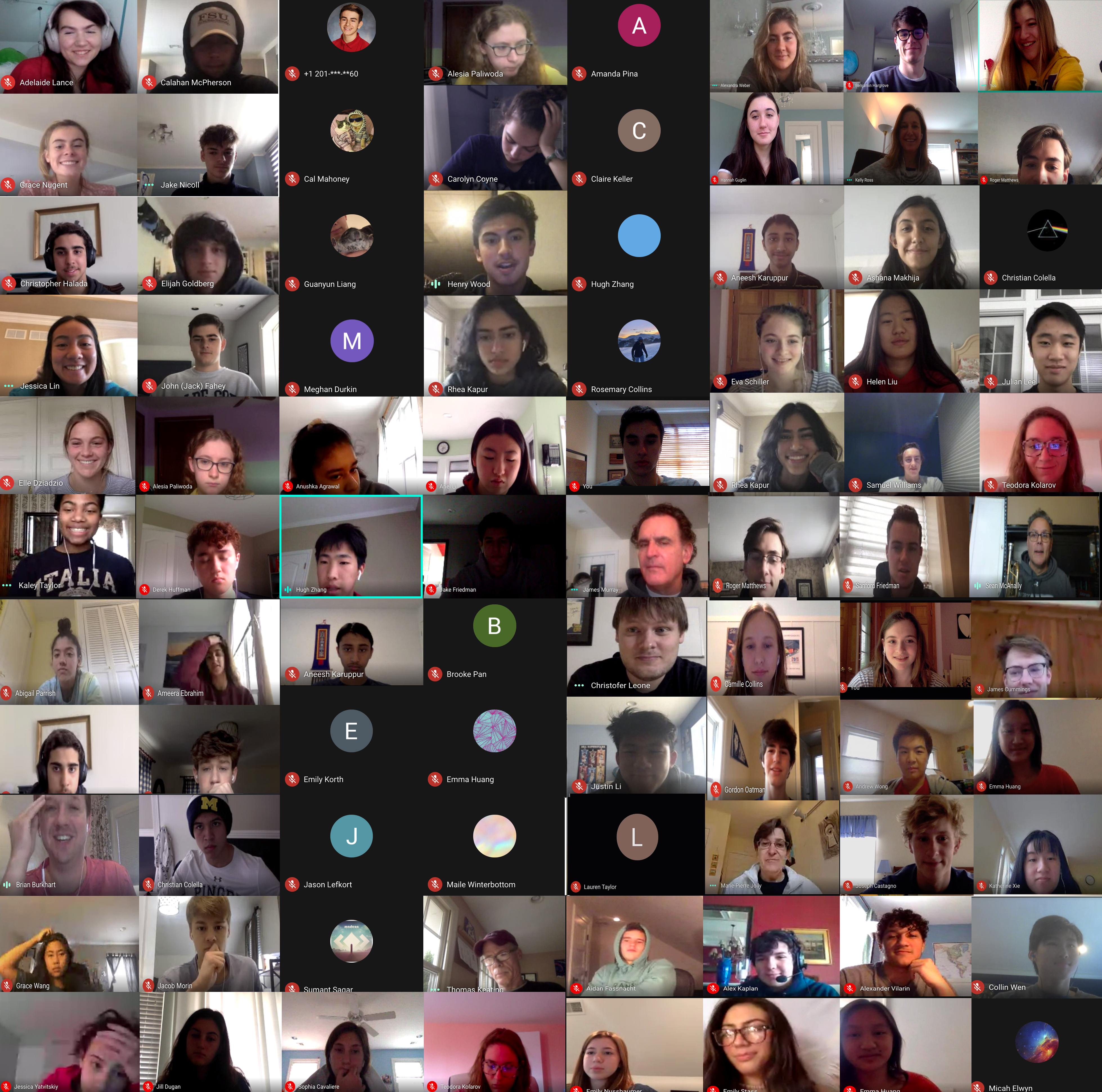
Image by Andrew Wong (IV)
By Emily Shen (IV)
Since the conclusion of Spring Break, Pingry students and faculty members have adopted remote learning in order to follow the state-mandated social distancing guidelines. By now, they have finished their first two weeks online. Although this transition has not been easy, members of the Pingry community are working hard to resume the quest for knowledge as they try to find peace during this time of uncertainty.
According to feedback from some students, most of their classes run synchronously or by using a combination of synchronous and asynchronous sessions. Almost all of the teachers use Google Meet as the platform for “face-to-face” sessions or conversations, and most work is posted via Schoology or sent out through emails. Teachers make themselves available for help during designated time slots or during flexes and conference periods to make sure students can still seek extra help if they need to.
However, although the continuation of block schedules is supposed to help create structure, the switch to remote learning has not been an easy one for the students. Many have reported that remote learning is negatively affecting their productivity, and it often seems like there is less time for students to meet with their teachers for help. Because students and teachers are constantly interacting through their computer screens, some found that online school is more draining than typical school. Many students also report a significant increase in their workload, as well as a lack of motivation to finish it. Moreover, although teachers were guided to cut their 60-minutes periods to 45 minutes, students still spend hours in front of their computers between attending classes and school work.
Students are not alone in having to adjust to virtual classes. Many teachers also find themselves having to alter their usual way of teaching. “The biggest difference for me is that teaching is like acting or stand-up comedy. I respond to the energy of the group. When we are physically all together, I can see and feel so much more. I can tell when you are tired or sad or upset with somebody in the room. I can tell whether you understand or not, so I can adjust my response…Online, it all feels much stiffer.” said Upper School English teacher, Mrs. Grant.
For the last two weeks, teachers reported that they have gotten a little more used to the experience, but they continue to struggle with their lesson plans. “Lesson planning is very different, and it takes a lot longer. I find myself reaching out to other language teachers, exploring different sources,” said Mr. Benoit, World Languages Department Chair and Upper School French teacher, “The most complex part right now is figuring out what assessments will look like at the end of each unit or theme.” Mr. Grant, a chemistry teacher at Pingry, believes that “if learning isn’t fun, then it will be easily forgotten. We need to help students gain the skills of thinking and reasoning that they will use throughout their lives.”
When asked how they’ve adjusted to remote learning, teachers listed several examples of how they have had to adapt. “One thing I learned from my first class is that as a teacher, I hate the mute button for my students, and now I have a ‘no mute’ policy,” answered Mr. Grant. Ms. Thuzar, a computer science and math teacher at Pingry, said that she “spends more time planning and making sure that the remote learning experience for the classes is not too different from the actual in-person classes.” Although that is difficult to accomplish, Pingry students and teachers are all trying to find some peace and normalcy during this chaotic time.
Like their students, some teachers have also found remote learning to be more tiring than a typical school day. “For some reason, this is all so draining,” said Mrs. Grant when asked about her experience, “Instead of gaining energy from being with all of you, I get exhausted. I was talking with some colleagues Friday evening, and they all reported that they wanted to take a nap in between classes.” Many teachers and students end up sitting in front of the computer and barely getting up the whole day. “I feel like all the classes are all lumped together into this continuous-time span where I sit at my desk in front of my computers for hours,” Ms. Thuzar added, “For the days I teach 3 or 4 classes per day, I ended up staying in front of my computers from about 8 AM to 4 PM, excluding lunch.”
Even though the future is filled with uncertainty, spreading positivity and hope has kept us going. Mrs. Grant shared a small anecdote that cheered many of her students up: “On a positive note, since Mr. Grant and I have opposite schedules, there is non-stop teaching going on in my house right now, so my cats are soon going to be ready for college!” Similarly, Mr. Grant shared that “these are definitely strange times. I think that the most important thing that remote learning can try to achieve is our sense of community. We will get through this experience and remember these times for the rest of our lives. With this in mind, I hope we can make some good memories together.”
Please take care of yourselves and continue to spread love and positivity amongst your friends and family! Stay safe!
